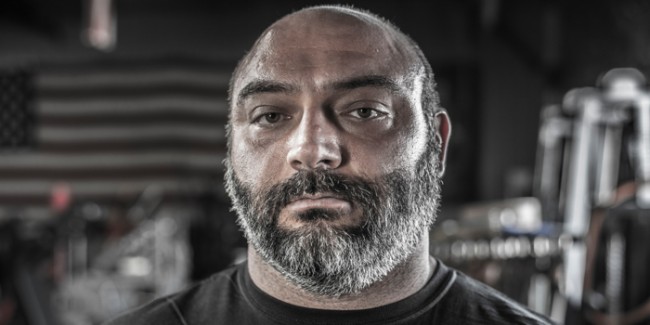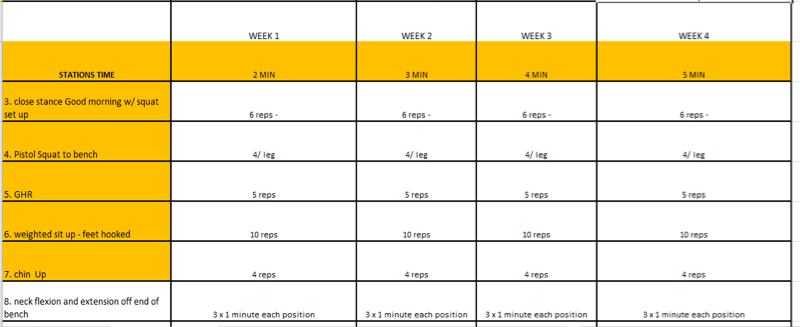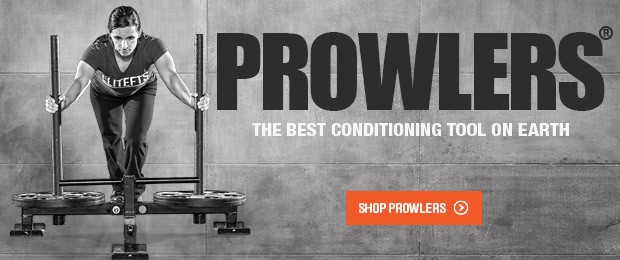
Before I write anything for this article, I need to give massive credit to Josh Hobbs, Chris Crabtree, Ed Dickens, Joel Shepard, and the Waverly coaches for bringing me in with their strength and conditioning team for their student-athlete population. I completely understand the amount of trust and faith it takes to put this type of thing in someone else's hands. The fact that I am able to be in the position doing what I am doing with their students is a huge honor for me both personally and professionally.
RECENT: Win Games by Waving Volume
I've been working with the district and their athletes for a couple of years now. In the summer of 2019. My involvement with the district increased to a point where I was visiting the school once a month and consulting with their coaches and student-athletes. I would come down, do some assessments, and plan out the next four to six weeks of training. I was hesitant to set the system up this way because I wouldn't be on-site coaching the students on a daily basis.
Luckily, Coach Crabtree, Mr. Gillott, and the other coaches involved have done a great job coaching their students while I am not there. Again, I have to give them a huge amount of credit, as it's obvious they are watching the coaching cues and taking note while I am in town working with our kids and are continuing to drill those important points of movement until my next visit. Too many coaches are concerned with what's on the paper and not what's being done in the weight room and how it's being done. These guys have done a tremendous job with their students and I think they are making a huge difference with their kids. Without these efforts, a program like this cannot work.
PHASE I: Get Good at the Movements
In a time when all we hear about is movement in the industry and we don't pay attention to the actual movements in the weight room, this is our first priority. Students need to be good at the basic movements in the weight room before we start pushing any serious weight. The general template I've used in the past, and early fall for Waverly, was to do speed work until the kids are proficient at the movements then we can start doing some heavy work. Many of the student-athletes started exactly like this; speed work for two to three weeks, then slowly adding in some heavy work.
The football team, which had been doing this system for a couple of years and were more familiar with the movements, were able to jump in and start doing some heavier work right off the bat. All of your athletes are at different levels and you need to meet them where they are. Thanks, JL Holdsworth!
Don't rush this process; we are involved in physical development not skill acquisition. This stuff takes time — slow down and let the athletes adapt to what you are throwing at them, you'll get a much better result in the long run. Letting your kids quarter squat, etc. and throw up massive numbers in the weight room will do nothing for their athletic development.
In the first phase of this project this is our main objective: Get at least 80 percent of the kids proficient at the basic movement. Now that we are at this point, we can move on to phase two: Teaching them how to work hard and train hard. Everyone wants to bitch and complain about how kids are lazy and don't work hard. I wonder how many of those people bitching and complaining actually take time to teach kids how to work hard?!
PHASE II: Rihanna: “Work, work, work, work, work”
This is a teaching phase, not a pound kids into the ground phase. We are not trying to make them hate training or resent the weight room or fear any strength coaches. We are going to do some cluster sets for the next month or two depending on how the training goes. This will also keep the athletes from being distracted and keep them on task in a group setting. We are starting with a low volume of work and we will slowly build them up. This will allow them a chance to acclimate to the training and increase workloads. In turn, they should see some great gains and strength and the way they feel.
At the beginning and end of these phases, we will communicate that this type of effort and increased volume can contribute to their improved performance. The goal of this phase is to show them how intense training needs to be and eventually phase them back into traditional sets and reps. Putting them on the clock and forcing them to take short rest periods and push through fatigue is probably something they haven’t really experienced yet. In my time in the collegiate sector, this training method always gave us great results with the athletes for these same reasons.
Cluster Set Definition:
- Select a weight you can do for about four to 10 more reps than the workout prescribes. This is relative to the athletes training age. For example, high school kids think everything they do is the hardest thing on earth, so we’ll compensate for that and tell them a weight they can do for four reps more than prescribed. For a more trained individual, if the workout says 10 reps, pick a weight you can do 20 with.
- For the set perform the prescribed reps, rest 15-20 seconds then repeat the reps for the prescribed total time.
- Over the course of a few weeks, increase the total time you spend on each exercise.
- Don’t get too caught up in the exact weight being used etc. because after a couple minutes of work, work, work, work, work they’ll achieve an acceptable level of fatigue and achieve the training stimulus we’re looking for.
- Use week one as a guide. The athletes will get an intro into the system without destroying themselves and you as a coach have time to make adjustments to the weights, reps, and time they are working.
- If you are in a group setting try to set the reps of all the exercises so that most of the room will end their set at about the same time. The fatigue will accumulate over the duration of the set, so you don’t have to crush them on set one.
Here are some templates that show a three-week wave of cluster sets, including our testing week and results, that we ran with women’s basketball in the collegiate setting:
- Women's Basketball - Post Season Training 2016
- Women's Basketball - Post Season Training 2016 - 2nd wave
- Women's Basketball - Post Season Training 2016 - 3rd wave
- Women's Basketball- 2016 post-season training - TEST WEEK
The Cluster Sets:
Here is an example of cluster setting your accessory work:
This is just the accessory work. The tissue prep, jumps/ throws, and max effort/dynamic lanes stay the same.
If you are looking for some variation that will keep your athletes organized, raise their work capacity, put some tissue on them, and maybe even teach them to work hard, give these moves a try.











